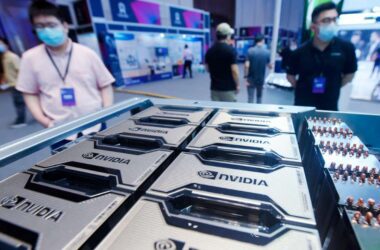Smartwatches fitted with a new type of transistor could run AI algorithmsLDprod/Shutterstock
A reconfigurable transistor uses one hundred times less power than a conventional silicon-based transistor when running artificial intelligence functions. As many AI algorithms would quickly drain the batteries of wearables made with regular transistors, this could assist accelerate development of a new generation of smartwatches and other wearable gadgets capable of leveraging sophisticated AI technologies.
These modern transistors use molybdenum disulfide and carbon nanotubes in their construction. They can be constantly rearranged by electric fields to handle many steps in AI-driven operations almost instantly. Transistors based on silicon, which are essentially small electronic switches, can only perform a single function at a time. This means that one reconfigurable transistor can be used for an AI activity that would normally require one hundred silicon-based transistors, drastically cutting down on power usage.
“The low energy results from the fact that we can implement the [AI algorithm] with a 100-fold reduction in the number of transistors, compared to conventional silicon technology,” explains Mark Hersam of Northwestern University in Illinois.
Using data from over ten thousand ECG tests, Hersam and his colleagues showed how reconfigurable transistors can aid a conventional machine-learning-based AI algorithm in making sense of the results. The AI successfully classified heartbeat data samples into six groups, with 95% accuracy. These six groups included one for “normal” heartbeats and five for “arrhythmic” heartbeats like rapid ventricular contraction.
Researchers at Northwestern University, led by Vinod Sangwan, believe that devices with limited battery life or unstable wireless internet connections to cloud-based AIs running in remote data centres could benefit greatly from the use of these energy-efficient transistors. He mentioned the possibility of creating wearables with artificial intelligence, such as activity trackers, thermometers, and BP monitors.
Hersam argues that another way to safeguard personal information is to use AIs locally on wearable devices rather than sending sensitive health data outside for processing.
However, the researchers have not yet figured out how to advance beyond the stage of making a small number of reconfigurable transistors for use in the lab. Eventually, they plan to use regular chip manufacturing machinery to mass-produce these transistors.
Sangwan notes that while the techniques at their core are compatible with silicon-based chip fabrication, there are still obstacles to be solved.
FAQs
- How does a reconfigurable transistor differ from a conventional silicon-based transistor in terms of AI functions?
- A reconfigurable transistor uses one hundred times less power than a conventional silicon-based transistor when running AI functions.
- What materials are used in the construction of these modern transistors?
- They use molybdenum disulfide and carbon nanotubes.
- Why are reconfigurable transistors more energy-efficient for AI tasks?
- One reconfigurable transistor can handle many steps in AI-driven operations almost instantly, whereas silicon-based transistors can only perform a single function at a time.
- What potential applications do researchers see for these energy-efficient transistors?
- They see potential in devices with limited battery life or unstable wireless connections, such as wearables with AI capabilities like activity trackers, thermometers, and BP monitors.
- What are the challenges in mass-producing these reconfigurable transistors?
- While the techniques are compatible with silicon-based chip fabrication, there are still obstacles in advancing beyond the lab stage to mass production.







